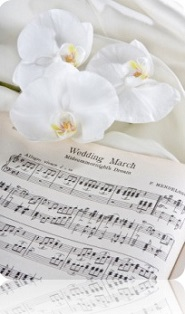Lesson 5: Melody
Lesson 5: Melody

Lesson 5: Melody
Melody

Melody may be one element of music that you feel somewhat familiar with. After all, we often talk about the melody of a song or piece of music. We may whistle it as we walk about or hum it to ourselves. At the most basic level, melody is a series of musical notes that have been strung together. It is composed of both pitch and rhythm and it represents the notes in a piece of music that catch our ears. Many pieces of music have other, extra notes within the music, but melody consists of that main series of notes that we hum or sing for a piece of music.
Melodies may be repeating sets of notes or musical phrases in some songs. For example, in some songs, the verse part of a song will have the same melody each time it is used in the song, or the chorus may have a consistent melody, regardless of how many times it is used in the song. In general, a melody will also feature a range of different notes, rising and falling throughout the piece. If the melody did not have this variation, it would likely become boring quickly, such as if someone played the same note on the piano for an entire song.
Within a melody are melodic phrases. Just as a phrase in a sentence gives a definite meaning when the words are placed together, so too do the melodic phrases within a piece of music. Melodic phrases are groups or sets of notes that make sense together, express a musical idea, and, when combined, create the melody. Just as we often pause when speaking a new phrase, we often find that there is a slight pause in the notes from the end of one melodic phrase to the start of another. The pause may be small, such as holding the last note just a bit longer than the earlier notes in the phrase, but with practice, we can learn to hear them. Melodic phrases also often line up with the phrases in the lyrics, so that can be another way of finding them in many cases.

Some forms of music also incorporate harmony. Harmony is having more than one pitch within the music at the same time. We often think of harmony as a complement to melody. In other words, when it is used, harmony sounds pleasant to us when placed with the melody of a piece of music. The two (or more) notes played together sound good together. However, in some cases, the harmony can be dissonant to the melody, sounding harsh or even unpleasant when the two notes are mixed. In Western music, harmonies are often related to chords, which are major or minor triads (three notes played at the same time).